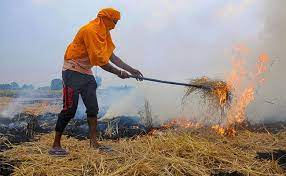Stubble Burning:

The Commission for Air Quality Management has said that a reduction in the area under paddy cultivation in Haryana, Punjab and Uttar Pradesh, as well as a shift away from paddy varieties that take long to mature, could see a reduction in stubble burning this year.
Reasons for this:
- The total paddy area in Haryana, Punjab and the eight NCR (National Capital Region) districts of Uttar Pradesh has reduced by 7.72% during the current year as compared to last year.
- Total paddy straw generation from the non-basmati variety of rice is likely to be reduced by 12.42% during the current year as compared to the previous year.
- Both Central and State Governments of Haryana, Punjab and U.P. have been taking measures to diversify crops as well as to reduce the use of PUSA-44 variety of paddy.
- Crop diversification and moving away from PUSA-44 variety with short duration High Yielding Varieties are part of the framework and action plan for control of stubble burning.
Stubble Burning:
- It is a common practice followed by farmers to prepare fields for sowing of wheat in November as there is little time left between the harvesting of paddy and sowing of wheat.
- Impact: Stubble burning results in emission of harmful gases such carbon diaoxide, sulphur dioxide, nitrogen dioxide along with particulate matter.




